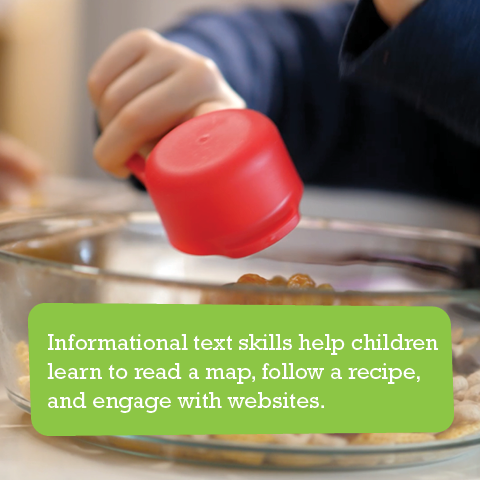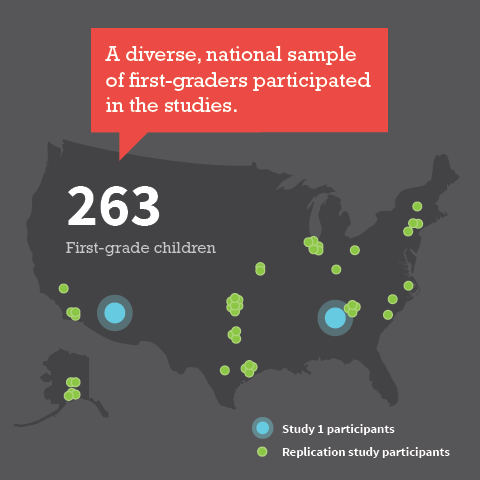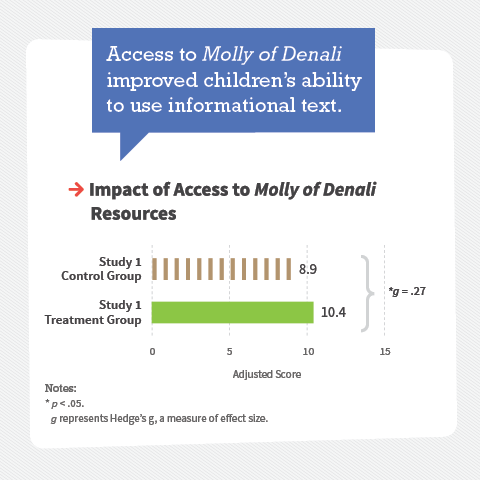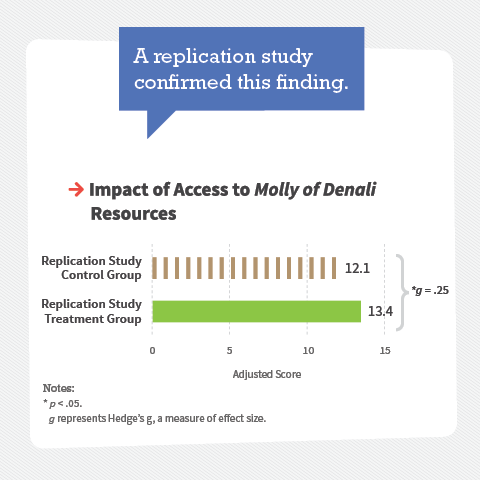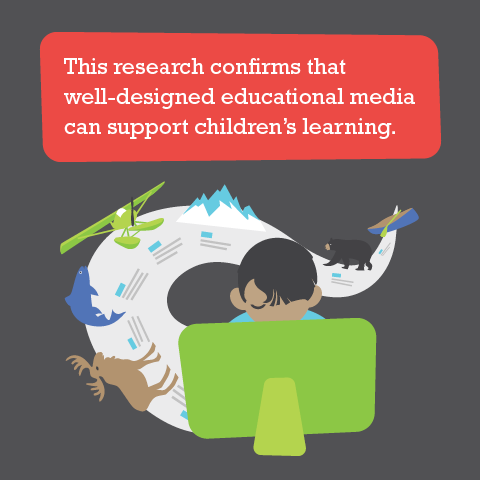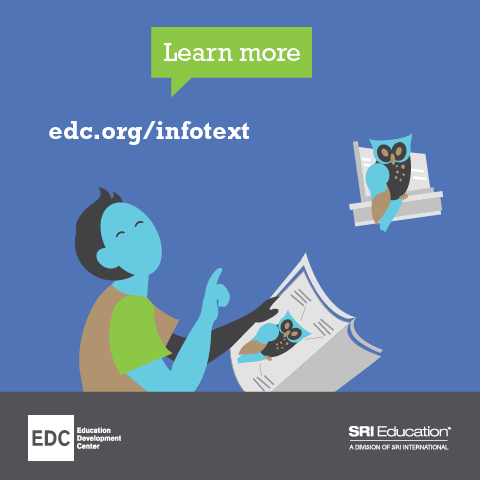Learning with Media, One Adventure at a Time
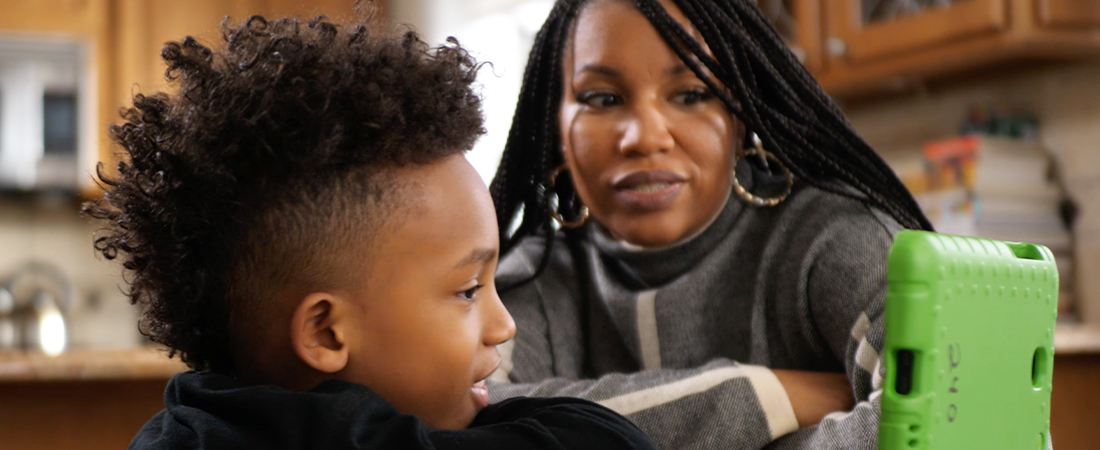
When young children read a map, use a recipe, or even play games on a digital device, they often have to make sense of informational text—text designed to inform.
However, understanding informational text can be a challenge for young readers. Its structure is quite different than that used in narrative stories, with which children are more familiar. Young children also tend to have much less exposure to diverse forms of informational text than they do to narrative stories.
But new research from EDC and SRI reveals that digital media can be a valuable tool in helping young children learn to use informational text. The research, titled Mahsi’choo for the Info! Molly of Denali Teaches Children About Informational Text, is the first-ever to connect children’s understanding of informational text to digital media.
The study was supported by the U.S. Department of Education’s Ready To Learn initiative. EDC and SRI International are long-standing evaluation partners for the Corporation for Public Broadcasting and PBS.
The research focused on Molly of Denali, the PBS KIDS series produced by GBH—and the first nationally distributed children’s series in the United States to feature an Alaska Native lead character. The series follows Molly as she uses all kinds of informational text in her everyday life, from following a recipe for homemade mosquito repellent to sharing her vlog.
In a pair of randomized control trials, EDC and SRI researchers sought to learn whether access to the Molly of Denali television series and associated resources—including interactive digital games and downloadable, printable activities—supported children’s ability to use informational text to answer real-world questions.
In the first study, conducted in spring 2020, 127 first-grade children from Alabama and Arizona participated. In summer 2020, researchers conducted the all-virtual replication study with an additional 136 children from across the United States. In both studies, all children were provided with a data-enabled tablet. Tablets for children in the treatment group came pre-loaded with Molly of Denali videos, activities, and resources, while tablets for children in the control group blocked access to Molly of Denali content and select apps focused on informational text.
Findings and Takeaways
Results from both studies indicated that access to Molly of Denali resources improved first-grade children’s ability to solve real-world problems using informational text. Further, younger children benefited more from access to Molly of Denali resources, and children who used Molly of Denali resources for longer periods also learned more.
EDC’s Joy Kennedy, who directed the research, points to two key takeaways from the study. (Read an interview with Kennedy about culturally responsive research here).
1. Quality educational media can support children’s learning at home.
Molly of Denali is the first PBS KIDS series to focus on informational literacy. Like other programs supported by Ready To Learn, the video content, digital games, and other resources helped young children learn. Notably, these studies revealed that children’s learning gains did not depend on co-engagement with a parent or caregiver.
Kennedy describes this as “a huge finding” that is particularly relevant now. One consequence of the coronavirus pandemic is that many children are spending more time with screens due to disruptions in early education and care. But these studies demonstrate that if children are consuming well-designed content, then they may be learning important literacy skills.
“This research shows that digital media can spark early learning,” Kennedy says. “It points to the urgency of helping parents and caregivers identify and choose that high-quality educational content for their children.”
2. Short-term, light-touch interventions can work.
Children’s use of Molly of Denali resources during the nine-week study was not extensive: researchers found that children only used them for about an hour a week. Yet the effect size of this “light-touch” intervention was equivalent to the growth in reading skills a first grader typically experiences over three months.
This finding has implications for the development of children’s educational media. Specifically, short interventions can work.
“If the learning goals are clear, and the media is well-designed, then educational media can foster learning gains even without intense usage,” says Kennedy.

